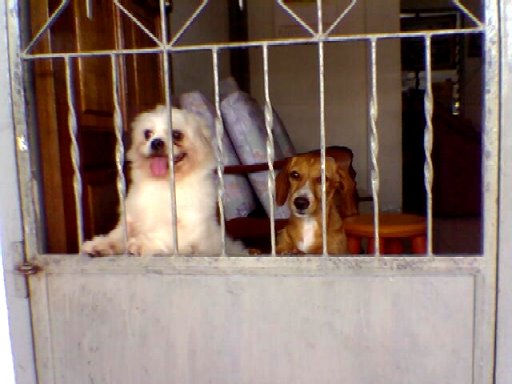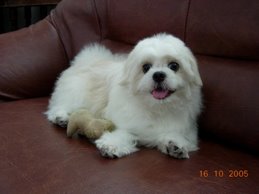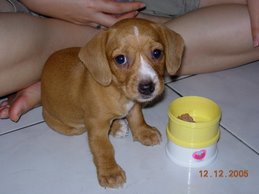Canine Anxiety And Excessive Barking - Bad Dogs Behavior Can Be Managed With Pet Meds
Calming pet meds can help control dog behavior problems such as excessive barking and separation anxiety. Your dog may have fears due to treatment received before he came to your home or the problems may stem from a change in his environment. Dog aggression and anxiety are two of the most common behavioral problems pet owners encounter. Corrective training and pet meds can combine to reduce or eliminate your dog's reaction to stress.
Dog aggression can take many forms. Food aggression is common to dogs of some breeds and to animals that may have been poorly cared for in the past. For an adult, dog food aggression is a problem that can be managed and confrontations avoided. If there are children in the home or frequent visits a dog with a tendency to closely guard his food is a danger to others. Over active dogs may constantly chase any moving objects even if the object is their shadow. Attempting to restrain such a dog can lead to him snapping or biting in an attempt to be released to carry on with his chasing activity.
A dog that is shy or fearful may react badly if he feels threatened with no avenue of escape. Even a shy dog when cornered may lash out in self defense. A new pet brought into the home without warning can lead to dog on dog aggression. Neutral territory is the place to introduce a new dog to the family. Disagreements among multiple dogs in the home will happen on occasion but are usually a method of establishing the pack order and not serious. This fussing is most often found when the pets are of the same gender.
Aggression can result when an owner corrects an animal too sharply or interrupts a dog whose barking has reached the level of hysteria. This is the canine equivalent of a panic attack in people and may be an instinctive response from a pet who had no intention of aggression. Separation anxiety is another indication of panic. A dog frightened of being left alone may destroy the furniture in your room or chew up rugs or personal possessions. This is not bad dog behavior but an emotional problem of anxiety that can be treated with pet meds and cured with training.
Certain breeds of dogs are known for their aggressive nature. You cannot remove instinct of a breed with training but you can control the aggression by eliminating the triggers that set the animal off. A well trained animal will be well behaved even though the breed is known to be aggressive as the owner can manage the dog's environment to reduce risk of problems.
Canine behavior medications are often used by trainers experienced in training to break bad habits in dogs. Anipril (or the generic version, Selegiline) is used for dogs suffering canine separation anxiety and from compulsive disorders. Clomicam and Amitriptyline for dogs help control dog aggression and are also used for separation anxiety disorders. An animal behaviorist will help a pet owner develop a plan to correct or control the behavior problems of their dogs. Part of the behavioral plan often includes medications that provide a calming effect or anti-depressants when needed.
Behavior management for dogs begins with good basic training techniques. However, some problems may occur in even well trained animals. Most behavioral issues are due to the dog's environment or to genetic factors. If the bad behavior is a result of environment or a residual effect of poor treatment of a previous owner, a behavioral plan may be able to totally reverse the problem and totally eliminate the activity. If the aggression or anxiety is caused by genetics, behavior training will revolve around managing the problem and avoid exposing the animal to conditions that trigger the negative behavior.
Bad canine behavior should not be ignored but solved or managed for the safety of the pet own and the dog. Pet meds to treat canine anxiety can be very expensive. However, your vet may be able to substitute a generic pet med and will be happy to give you a prescription so you can buy discount pet meds online for savings.
Dog aggression can take many forms. Food aggression is common to dogs of some breeds and to animals that may have been poorly cared for in the past. For an adult, dog food aggression is a problem that can be managed and confrontations avoided. If there are children in the home or frequent visits a dog with a tendency to closely guard his food is a danger to others. Over active dogs may constantly chase any moving objects even if the object is their shadow. Attempting to restrain such a dog can lead to him snapping or biting in an attempt to be released to carry on with his chasing activity.
A dog that is shy or fearful may react badly if he feels threatened with no avenue of escape. Even a shy dog when cornered may lash out in self defense. A new pet brought into the home without warning can lead to dog on dog aggression. Neutral territory is the place to introduce a new dog to the family. Disagreements among multiple dogs in the home will happen on occasion but are usually a method of establishing the pack order and not serious. This fussing is most often found when the pets are of the same gender.
Aggression can result when an owner corrects an animal too sharply or interrupts a dog whose barking has reached the level of hysteria. This is the canine equivalent of a panic attack in people and may be an instinctive response from a pet who had no intention of aggression. Separation anxiety is another indication of panic. A dog frightened of being left alone may destroy the furniture in your room or chew up rugs or personal possessions. This is not bad dog behavior but an emotional problem of anxiety that can be treated with pet meds and cured with training.
Certain breeds of dogs are known for their aggressive nature. You cannot remove instinct of a breed with training but you can control the aggression by eliminating the triggers that set the animal off. A well trained animal will be well behaved even though the breed is known to be aggressive as the owner can manage the dog's environment to reduce risk of problems.
Canine behavior medications are often used by trainers experienced in training to break bad habits in dogs. Anipril (or the generic version, Selegiline) is used for dogs suffering canine separation anxiety and from compulsive disorders. Clomicam and Amitriptyline for dogs help control dog aggression and are also used for separation anxiety disorders. An animal behaviorist will help a pet owner develop a plan to correct or control the behavior problems of their dogs. Part of the behavioral plan often includes medications that provide a calming effect or anti-depressants when needed.
Behavior management for dogs begins with good basic training techniques. However, some problems may occur in even well trained animals. Most behavioral issues are due to the dog's environment or to genetic factors. If the bad behavior is a result of environment or a residual effect of poor treatment of a previous owner, a behavioral plan may be able to totally reverse the problem and totally eliminate the activity. If the aggression or anxiety is caused by genetics, behavior training will revolve around managing the problem and avoid exposing the animal to conditions that trigger the negative behavior.
Bad canine behavior should not be ignored but solved or managed for the safety of the pet own and the dog. Pet meds to treat canine anxiety can be very expensive. However, your vet may be able to substitute a generic pet med and will be happy to give you a prescription so you can buy discount pet meds online for savings.
About the Author:
dog behavior management meds can turn your bad dog into a calm best friend. Buy pet meds from a practicing veterinarian to calm your anxious canine and stop bad dog behavior at Pet Scripts Direct.














.jpg)






.jpg)

0 comments:
Post a Comment